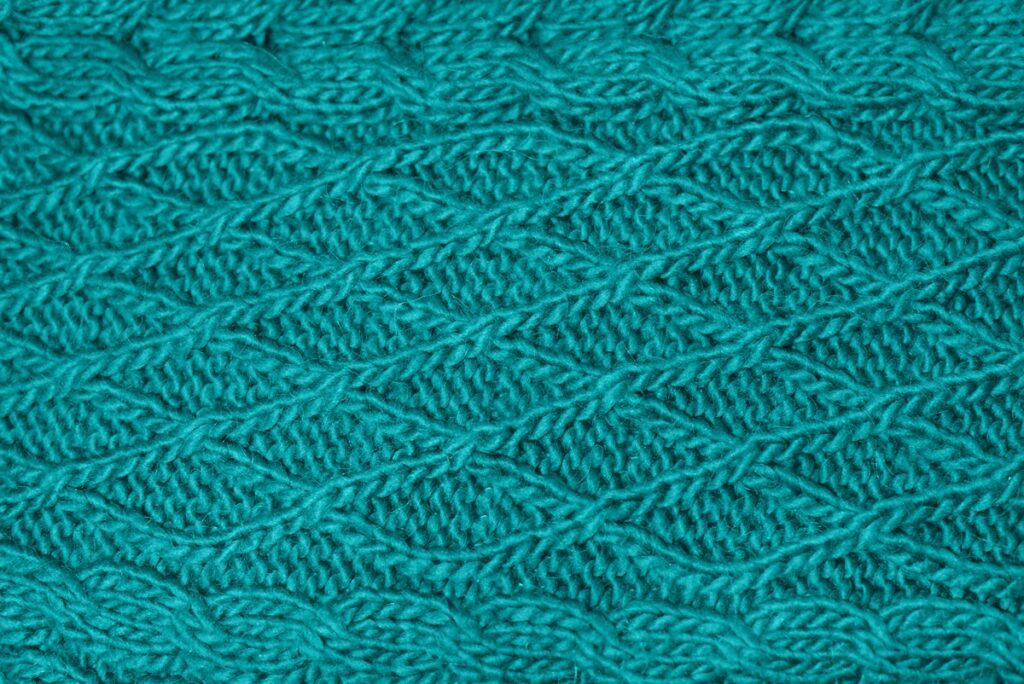Knitting calms you down and you love it. You’ve already decided that knitting is a great hobby, yet you never have enough time in the day to finish all the projects you want to. Are you looking for tips and guidance on how to knit faster? This article is a great place to find out.
Key Takeaways
- Knitting is a lot faster when using metal knitting needles
- The main types of knitting are continental and English
- The fastest knitting technique is Irish Cottage Knitting
- Speed is not everything, so firstly, make sure you’re having fun
- Finding time for your hobby is very important
How can you make your knitting faster?

The most obvious answer to this question is to replace the knitting needles that you already own, with a pair made out of aluminum or stainless steel. Knitting is a lot faster this way because of the type of friction that is provided by metal knitting needles.
Moreover, using both of your hands and reducing the amount of movement while knitting the yarn helps along with keeping the tension controlled.
What’s the best way to speed up the knitting
There are countless methods when it comes to knitting fast. Still, you have to find out what works best and is suited specifically for you.
The two main ways in which you can knit are:
- continental or German style, or “picking”
- English style, which is known as “throwing.”
The main difference between the two is in which hand the yarn is held. The fastest method known, however, and most used by professional knitters is one that is called lever knitting, pivot knitting, or Irish cottage knitting.
It is a variation of the English knitting technique, in which you hold the yarn in your right hand. It is not quite the same though, because you use the needle in that hand as a lever and you only move the left hand to create stitches.
Other styles of knitting
Other common ways of knitting consist of Norwegian knitting, Russian, and Portuguese knitting. Each region has its own intricacies when it comes to knitting.
You can also read about the types of buttons.
Tips for Speed Knitting

Speed doesn’t always mean quality. It’s better if your knitting has a lot of controlled tension and well-made stitches, even at the cost of a lot more time.
Creating a Stress-Free Environment
My tips, however, for knitting faster would be to turn on the TV and play your favorite show while you knit. Do this in the comfort of your room. This creates a calm and stress-free environment which can help you focus on your knitting. You can go on for hours and be entertained, while also being significantly more productive.
Use Simple Stitch Patterns
If you care about how fast you’re going to have your project finished, I suggest you hold off on those highly complex stitching patterns. Stick to the basics. A simple knit stitch or garter stitch goes a long way when it comes to knitting fast. Even if it gets a little repetitive, at least you won’t need to waste time referencing your pattern.
Stick to Straight Stitch
Sticking to a straight stitch can significantly increase your speed while knitting. According to Stephanie Pearl McPhee, an extremely talented knitter also known as Yarn Harlot, continental straight knitting is the way to go. Purling the yarn, on the other hand, even for her, slows down the knitting process by a lot.
Knit closer to the tip
The less distance you have between your knitting needles, the faster the knitting will be. There is a nice flow when it comes to the stitches sliding off one needle onto the other, but be mindful of dropping your stitches. Keeping the tension while knitting is key.
Consider Your Materials
Logically, knitting is faster when we use bigger knitting needles with bulkier materials. Thicker yarn makes the projects considerably bigger. This helps with keeping your flow, thus making your knitting a lot faster than if you were to make delicate pieces by using small needles.
You can also read a comparison between modal fabric and cotton.
Keep Your Knitting Projects with You
If you don’t want to knit for long periods at a time, you can just bring the knitting projects with you no matter where you are. Having the projects with you while traveling or even while waiting in line or doing small chores aids in finishing your projects faster. This happens due to the fact that they are in your line of sight. If you see your knitting needles more often you are more likely to pick them up and knit, in comparison to them being tucked away and forgotten somewhere in your room.
Experiment
Don’t try to make popular things work, if you can tell they aren’t working for you. Keep an open mind, however, and don’t be afraid to experiment with moving the yarn around your fingers. You could wrap the yarn around your ring finger, as one does for a Portuguese stitch or you could wrap it around three fingers. Even knitting can be done intuitively, as long as you don’t drop the yarn after every stitch.
Don’t Give Up Hope
The most important thing when it comes to knitting, as with every hobby, is not giving up hope. Find time to work on your projects. Don’t be afraid of there not being enough time. Feel free to experiment with the type of yarn you’re using. Experiment with patterns and colors. Part of why knitting is fun is losing yourself in the loops of yarn and being creative. Sometimes it is easy to be discouraged. Knitting can be slow and frustrating, especially for a beginner. So, taking breaks and having a reasonable goal in mind are needed.
Research
As for anything you want to get better at, I suggest doing research. Learning how to knit without making many mistakes is very important for getting better (or in this case, faster). You can learn more about knitting by watching short tutorials and YouTube videos; reading articles such as this one, or asking for advice from more experienced people.
There’s also a list of some amazing sewing machines for curtains.
Frequently Asked Questions

Is continental or English knitting technique faster?
The most common and preferred way of knitting is continental, as it is less stressful on the fingers than English knitting. Needless to say, without proper posture, it can also lead to Repetitive Stress Syndrome and injury. English knitting is a lot simpler for beginners to learn, making Continental slightly faster.
How fast can the fastest knitter knit?
While an average knitting speed is 20-30 stitches a minute, the fastest knitting speed is 118 stitches per minute, recorded in the Guinness Book of World Records by Miriam Tegels.
Final Words
Knitting is a great and stress-reducing hobby. While speed is important in finishing up projects you have a deadline for, I recommend working at your own pace and making sure you’re having fun trying out different patterns and materials. You can always learn new things, so don’t be discouraged from re-learning or experimenting with different knitting techniques and styles. Be open-minded and you’ll get faster with practice.
I am a proud mother of two amazing daughters, and i run our sewing & embroidery business full time. I am also a part-time writer for this blog, because i love sharing my findings and experiences!



